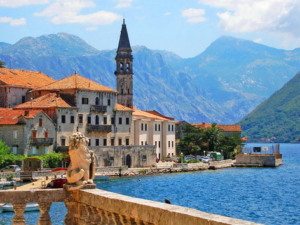
Almost half of divorces occur in five regions
In the first half of 2025, Ukrainians dissolved at least 38,700 marriages in courts — three times more than in civil registry offices (12,700). Almost half of divorces occur in five regions. The lowest divorce rate is in the west of the country.
Ukrainians dissolved at least 38,671 marriages in courts in the first half of 2025, according to the Babusya court decision search engine. The Dnipropetrovsk region became the absolute leader in the number of dissolved marriages in Ukraine this year. In six months, 5,188 couples divorced here, accounting for 13% of all court decisions found using the Babusya court registry search engine.
The capital ranks second: 3,544 divorce decisions (9%) were recorded in Kyiv. Third place goes to the Odesa region with 3,121 cases (8%).
In total, 45% of all divorces are concentrated in five regions: Dnipropetrovsk, Odesa, Kharkiv, Kyiv regions, and Kyiv itself.
In the west of the country, the divorce rate is traditionally low. In the Zakarpattia region, courts considered 777 cases, and in the Volyn region, 829. These are among the lowest rates in Ukraine, excluding regions affected by hostilities.
During the same period, 12,691 marriages were dissolved in civil registry offices, three times less than in courts. It is worth noting that the same regions are in the lead, with only minor changes: the capital ranks first with 1,780 divorces, followed by the Dnipropetrovsk region with 1,252, and the Kharkiv region closes the top three with 889.
Apart from the frontline and partially occupied regions, the lowest number of divorces in civil registry offices was again in Zakarpattia — 171 cases, followed by Chernivtsi (239) and Ternopil (247) regions.
It should be noted that divorce at a civil registry office is possible if the spouses have no joint property or disputes over its division, and no minor children.
https://opendatabot.ua/analytics/divorces-2025

The Vienna Insurance Group (VIG) reported a 10.5% increase in pre-tax profit to €531.4 million in the first half of 2025 compared to the same period in 2024, partly due to significantly lower overall claims development.
According to the Reinsurance News website, citing data from the insurer, gross written premiums also increased to €8.57 billion (up 8.7%).
According to VIG, all areas of its business recorded growth, with the highest rates observed in life insurance (+32.7%) and life insurance linked to investment funds and indices (+26.4%).
Meanwhile, health insurance grew by 15.0% and motor vehicle liability insurance by 12.5%.
VIG also added that premiums in special markets grew by 19%, with Turkey (23.8%), Poland (15.2%), and the wider Central and Eastern Europe region (10.1%) being the main growth drivers, with Romania (+14.4%) and the Baltic states (+10.7%) making the largest contributions to this figure.
At the same time, insurance premiums grew by 6.7% in the Czech Republic and 5.2% in Austria.
As reported, VIG’s net combined ratio for the first half of 2025 improved to 91.9% compared to 93.3% in the first half of 2024. This is due to significantly lower costs caused by weather conditions and natural disasters during the period.
In Ukraine, VIG is represented by PJSC “IC ”Knyazha Vienna Insurance Group“, PJSC ”IC “Ukrainian Insurance Group” and PJSC “IC ”Knyazha LIFE Vienna Insurance Group”.

The Cabinet of Ministers approved a resolution that will allow internally displaced persons who lived in the temporarily occupied territories to receive assistance of up to UAH 2 million to purchase a new home, according to the Ministry of Community and Territorial Development.
“We are launching a new support mechanism that will allow thousands of Ukrainians whose homes remain in the temporarily occupied territories to purchase their own homes. This is not just about housing — it is about regaining a sense of home, stability, and security. We already have agreements with international partners for $180 million. These are the first 3,700 families who will receive payments. We continue to work to ensure that every Ukrainian family affected by Russian aggression has access to state assistance,” said Deputy Prime Minister for the Restoration of Ukraine — Minister of Community and Territorial Development Oleksiy Kuleba.
The voucher will be provided as part of the expansion of the “eReconstruction” program developed by the Ministry of Development. The amount of assistance is up to UAH 2 million per person or family. The state will issue housing vouchers — electronic documents that will be stored in the State Register of Damaged and Destroyed Property.
The voucher can be used to purchase an apartment or house (or invest in its construction); pay the first installment or repay a mortgage.
Previously, internally displaced persons whose homes remained in the temporarily occupied territories could not take advantage of existing compensation programs. This was due to the inability to inspect the housing. Now, the state offers a separate form of support that allows them to purchase new homes in safer regions.
Initially, the program will be available to IDPs who have combatant status and persons with disabilities resulting from the war.
The program will start two months after the resolution is published. From then on, applications for assistance can be submitted through the “Dія” app, and later at administrative service centers or notaries. Verification will be carried out automatically through state registries. The application review period will be no more than 30 days.
Applications will be reviewed by commissions at local government bodies or military administrations.
The program may be financed from the state budget, international aid, loans and grants from partners, as well as possible reparations from the Russian Federation in the future.
It is specified that those who have other housing in the territory controlled by Ukraine (except for those where hostilities are taking place) or have already received monetary compensation or housing from the state will not be eligible for assistance under this program. Applications from persons who are under sanctions or have criminal records will also not be considered.

Relocation conducted an analysis of the Albanian housing market in the first half of 2025. In 2025, the market is moving towards normalization after an extremely turbulent period from 2022 to 2024. There are fewer building permits, the growth in construction costs has slowed down, prices in the capital have stabilized, and prices on the coast remain high. The share of deals involving foreigners is close to one in five for the half-year, based on the latest Bank of Albania survey (data for H2’2024), and their investments exceeded €380 million in 2024.
Building permits. In Q1 2025, 258 permits for new buildings were issued (-17% y/y). This is a sign of caution on the part of developers after record years and a factor that will restrain supply in 2025-2026 (we are awaiting data for Q2).
Construction costs. The housing construction cost index (INSTAT) rose by 1.0% y/y in Q1 2025, significantly slower than a year ago (3.4% y/y), which partially relieves price pressure from materials and labor.
Prices: capital vs. coast
According to the Bank of Albania (latest published market survey, H2’2024), about 18% of apartments sold in Albania were purchased by non-residents, of which ≈77% were EU citizens. This is an important benchmark for the first half of 2025: the share of foreigners remains significant, especially in coastal municipalities.
Mortgage loans finance a significant portion of transactions, but the share of cash purchases remains high in resort areas.
Rentals and profitability
Foreign buyers
As for forecasts, supply will grow moderately. As for prices, there will be more stable dynamics in the capital and higher seasonal volatility on the coast. Demand from non-residents will remain strong, especially in coastal locations and rental projects.
Source: http://relocation.com.ua/analysis-of-the-housing-market-in-albania-in-the-first-half-of-2025/

In the first quarter of 2025, foreigners purchased €113.5 million worth of real estate in Montenegro (-21% year-on-year), with citizens and companies from Serbia, Turkey, and the US being the largest buyers, according to data from the Central Bank of Montenegro (CBCG) published by Vijesti.
Ukrainian citizens ranked 11th, along with buyers from Poland and the Czech Republic.
Ranking of countries by purchase volume, Q1’2025
Outside the top ten, Ukraine, Poland, and the Czech Republic are in 11th place (€2.3 million each), followed by Bosnia and Herzegovina (€1.9 million), Canada, and France (€1.4 million each). The geography of the deals covers buyers “from five continents,” the source notes.
According to CBCG, in January-March 2025, the total inflow of FDI into Montenegro amounted to €211 million, of which 54% was accounted for by real estate purchases. Other forms of FDI (investments in companies/banks, intra-group loans) declined. Monstat records a steady increase in prices for new buildings: the average price exceeded €2,000/m²; the coastal region remains the most expensive.
The rating is based on the value of transactions concluded in Q1’2025 according to official statistics from the Central Bank of Montenegro (CBCG) published in Vijesti; the countries and amounts are given in euros. The final annual results are usually published by the CBCG in consolidated reports.
Source: https://t.me/relocationrs/1340

The consolidated financial result of the National Bank of Ukraine (NBU) for January-June 2025 amounted to UAH 51.2 billion, which is 2.4 times less than in the same period of 2024, according to the central bank’s report on its website on Wednesday.
According to the report, the National Bank ended the second quarter of this year with a financial result of UAH 36.4 billion, which is 43.6% less than the financial result of the second quarter of last year.
This decrease in profit is explained by the decline in the result from operations with financial assets and liabilities in foreign currency and monetary gold: in the first half of this year, they amounted to UAH 17.1 billion, compared to UAH 95.7 billion in the first half of last year, including UAH 21.0 billion in the second quarter, compared to UAH 49.7 billion.
“The largest impact on the amount of profit was made by the results of transactions with financial instruments in the amount of UAH 25.6 billion, consisting of recognized interest income on non-resident securities and changes in the fair value of financial instruments and the official exchange rate,” the NBU noted.
At the same time, the central bank emphasized that the consolidated profit reflected in the National Bank’s financial statements is not part of the distributable profit to be transferred to the state budget, which will be determined based on the results of the entire 2025 and published in the spring of 2026. In April and May 2025, the National Bank transferred UAH 84.2 billion to the state budget based on the results of 2024.
The central bank also reported that at the end of the first half of the year, its assets increased by 3% to UAH 2,791 billion. The main changes were due to changes in foreign currency-denominated assets, namely: a 54% increase in SDR assets to UAH 71.8 billion; a 10% increase in foreign currency and bank metal funds and deposits to UAH 534 billion.
As the NBU noted, the volume of international reserves it managed in accordance with its mandate increased by 3% to $45.1 billion at the end of the first half of 2025.
The National Bank’s liabilities at the end of the first half of 2025 amounted to UAH 2,171 billion, which is 1.8% more than at the beginning of the year.
Among other things, the volume of funds of state and other institutions increased by 35% to UAH 375.2 billion; at the same time, the volume of liabilities on loans received from the IMF decreased by 34% to UAH 34.8 billion.
According to the report, as of mid-year, hryvnia funds of budgets and budgetary institutions in NBU accounts amounted to UAH 50.5 billion (UAH 101.4 billion at the beginning of the year), while foreign currency funds amounted to UAH 320.9 billion (UAH 171.9 billion).
In the first half of this year, the National Bank reduced its expenses on deposit certificates by 7.6% to UAH 39.9 billion, although in the second quarter they increased by 6.6% to UAH 21.7 billion.
“The 9% increase in the National Bank’s equity capital in the first half of 2025, from UAH 567 billion to UAH 619 billion, was mainly due to the accumulation of profits in the current year,” the National Bank emphasized.
The final amount of the National Bank’s distributable profit to be transferred by the National Bank to the state budget in 2026 will depend on the actual macroeconomic indicators in 2025 and will be determined after confirmation by an external audit and approval by the National Bank Council of the NBU’s annual financial statements for 2025.
According to the report, personnel expenses in the first half of this year increased by 28.8% to UAH 2.28 billion.